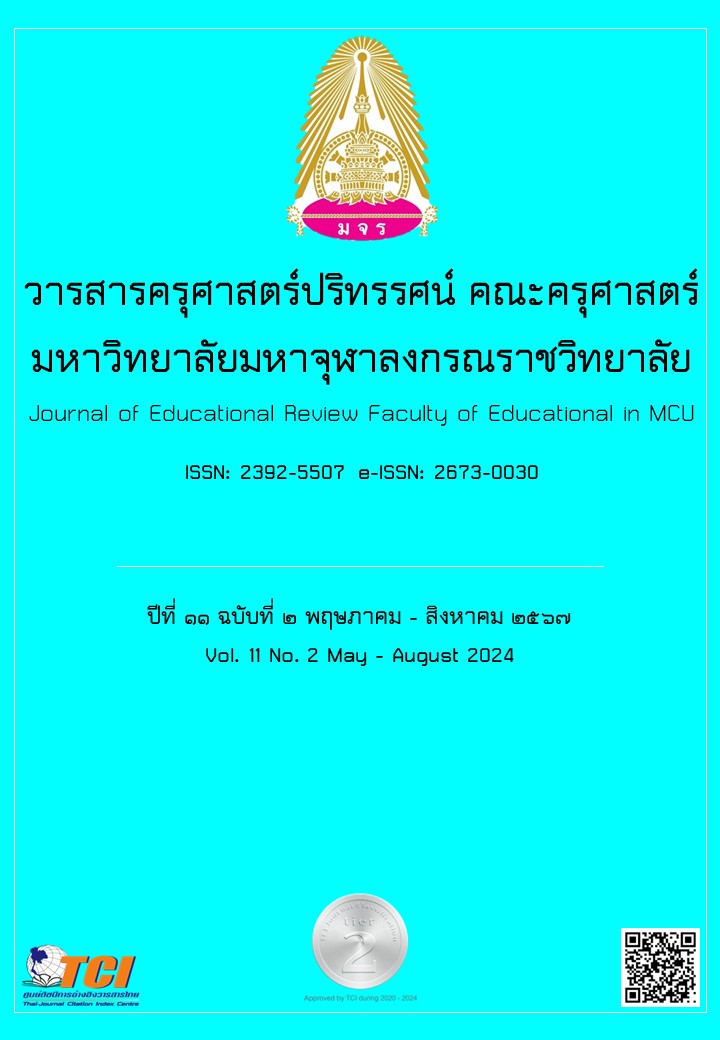THE APPLICATION OF SMART CLASS WITH ARTIFICIAL INTELLIGENCE FOR LEARNING ACHIEVEMENT OF SITUATION AND POLICY COURSE OF YEAR 3 UNIVERSITY STUDENTS IN CHINA
Main Article Content
Abstract
This mixed methods study compared year 3 university students’ Situation and Policy course achievement before and after using Smart Class with AI and investigated their satisfaction towards the use of Smart Class with AI in Jiangxi Province, China. The sample group consisted of 20 junior students at Nanchang Institute of Technology, China. Quantitative and qualitative data were collected through four lesson plans, pre-test, post-test, questionnaire and focus group interview. Quantitative data were analyzed using means, standard deviations and paired sample t-test. Qualitative data were analyzed using thematic analysis. The data collection lasted for four weeks. The results of the pre-test and post-test showed that the students in the sample group significantly improved their learning achievement in Situation and Policy course. The questionnaire items were all rated in a high level, and most students were satisfied with this teaching method. This study demonstrated that the use of Smart Class with AI provided an alternative and effective method for Situation and Policy course.
Article Details

This work is licensed under a Creative Commons Attribution-NonCommercial-NoDerivatives 4.0 International License.
ทัศนะและความคิดเห็นที่ปรากฏในบทความในวารสารฉบับนี้ถือเป็นความรับผิดชอบของผู้เขียนบทความนั้นเพียงผู้เดียว และไม่ถือเป็นทัศนะและความรับผิดชอบของกองบรรณาธิการ
กองบรรณาธิการขอสงวนสิทธิ์ในการคัดเลือกบทความลงตีพิมพ์และจะแจ้งให้เจ้าของบทความทราบหลังจากผู้ประเมินบทความตรวจอ่านบทความแล้ว
ต้นฉบับที่ได้รับการตีพิมพ์ในวารสารครุศาสตร์ปริทรรศน์ คณะครุศาสตร์ มหาวิทยาลัยมหาจุฬาลงกรณราชวิทยาลัย ถือเป็นกรรมสิทธิ์ของคณะครุศาสตร์ มหาวิทยาลัยมหาจุฬาลงกรณราชวิทยาลัย ห้ามนำข้อความทั้งหมดหรือบางส่วนไปพิมพ์ซ้ำ เว้นเสียแต่ว่าจะได้รับอนุญาตจากมหาวิทยาลัยฯ เป็นลายลักษณ์อักษร
References
Allen, I. E. & Seaman, C. A. (2007). Likert scales and data analyses. Quality progress. 40(7). 64-65.
Bautista, G. & Borges, F. (2013). Smart Classrooms: Innovation in formal learning spaces to transform learning experiences. Bulletin of the IEEE technical Committee on learning Technology. 15(3). 18-21.
Hartas, D. (2015). Educational research and inquiry: Qualitative and quantitative approaches. London, Britain: Bloomsbury Publishing.
Ma, C. (2019). Analysis on the Basic Characteristics of the Teaching Evaluation of “Situation and Policy” Course. In 3rd International Seminar on Education Innovation and Economic Management (SEIEM 2018).
Martin, S. M. (2019). Artificial intelligence, mixed reality, and the redefinition of the classroom. Washington: Rowman & Littlefield.
Shousong, Z. (2003). A Review of General Education Research in my country in the Past Ten Years. Educational Theory and Practice. 20. 12-14.
Uskov, V. L., Bakken, J. P. & Pandey, A. (2015). The ontology of next generation smart classrooms. In Smart education and smart e-learning. Springer International Publishing.
Yang, Z. & Jianping, Z. (2020). Exploring the Smart Classroom and its differences with the traditional classroom. Literature Education (Next). 11. 50-51. doi:10.16692/j.cnki.wxjyx.2020.11.023


